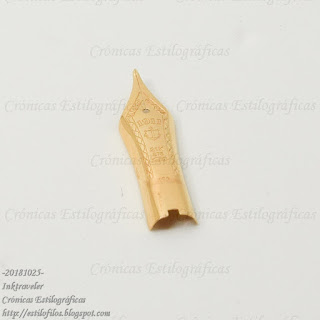When a Japanese pen is at fault, the different writing scripts –Kanji and kana in Japan, alphabet in the West— have been used by some to explain why it did not work properly, and even to justify how suitable a pen is for certain market.
These are some examples:
Some years ago, it became well known that the size #10 Falcon nib by Pilot (present on the models Custom 742 and Custom Heritage 912) did not always behave properly (::1::, ::2::). Many units tended to railroad under almost any pressure. But to this obvious fault some in the West invoked the special way of writing (Japanese, that is) to explain and justify that failure.
More recently, Davidoff argued –at least in Japan-- that their nibs were perfectly suited for Japan because their nibs were Sailor's... Like if Pelikan and Montblanc pens were so bad at that and had a hard time in the Japanese market.
The case of Naginata Togi nibs has already been discussed on these pages. In the Japanese market, Sailor brags about how suitable those nibs are to write Japanse (::3::, ::4::), but that does not prevent Sailor from selling them in the West...
All those examples are nothing but bland excuses and cheap marketing. A pen is a pen and must write well in any script. And Pilot claimed this long time ago:
A Namiki ad from 1927 in the UK explained that the Japanese writing was the perfect benchmark to ensure the correct performance of their pens under any circumstance... such as writing in alphabet!

The Bookseller & the Stationery Trades Journal, July 1927. Page 27. As seen at the Pen Station, Tokyo, in April of 2013. Japanese as the perfect test for any pen!
Japanese are not from another planet. Neither are Westerners when seen from Japan.
Sailor Profit Naginata Togi – Pilot Iroshizuku Ku-jaku
Bruno Taut
Nakano, July - August 2019
etiquetas: mercado, Japón, japonés, Pilot, Sailor, Davidoff, plumín
Bruno Taut
Nakano, July - August 2019
etiquetas: mercado, Japón, japonés, Pilot, Sailor, Davidoff, plumín






























































